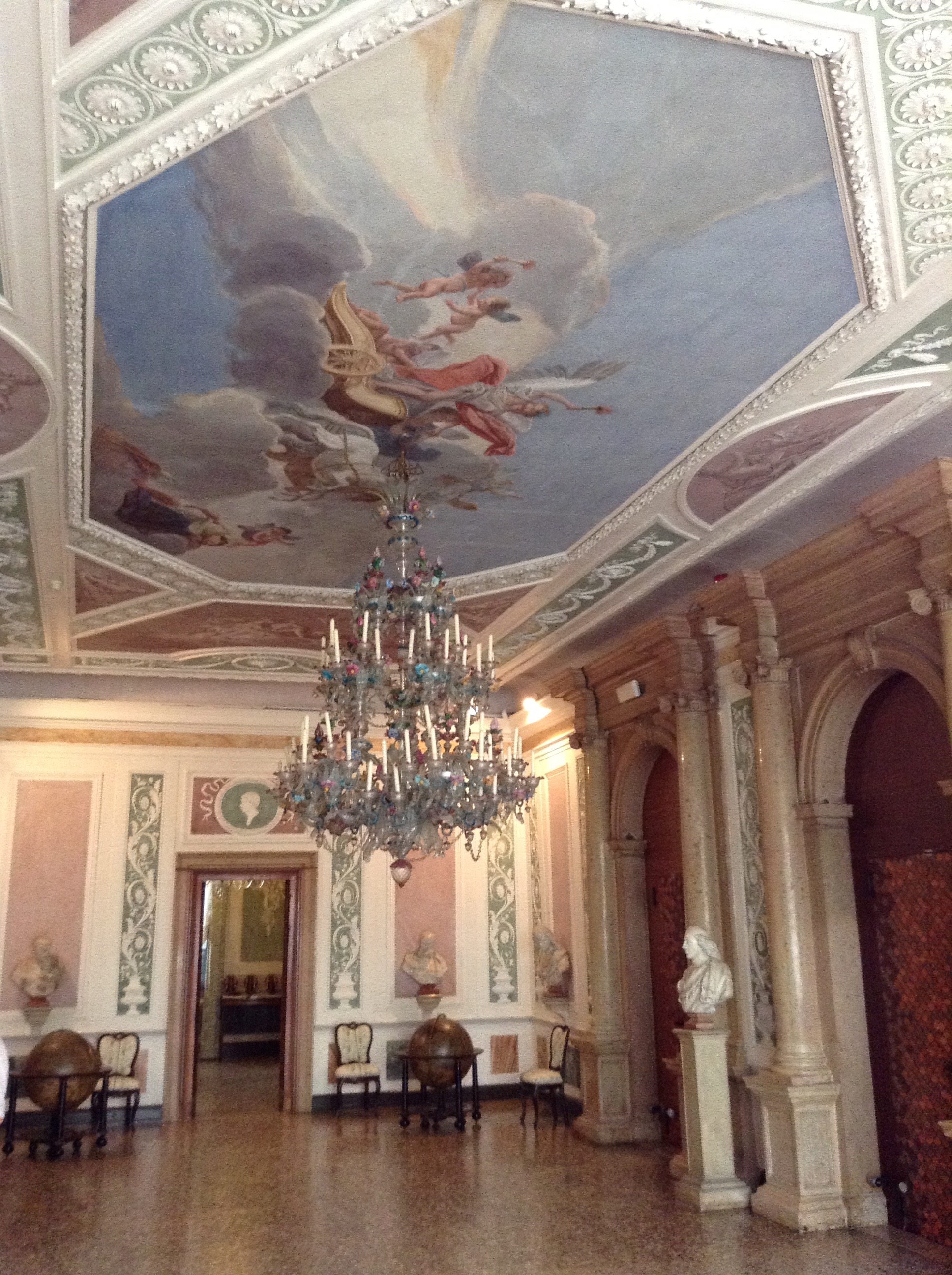Chapter 10:

“We made our way towards the little square behind the church, the codega providing a damp luminescence in the mist to guide our footsteps. This feeble light proved unnecessary by the time we reached the little bridge that crossed the canal to the Querini palace, since not only was there a hazy glow of light from the piano nobile but there were a number of other people with lanterns; some were walking towards the bridge, while others were getting out of gondolas and giving instructions to their gondoliers about the return journey…”
As indicated in the end-note, the palace described in the novel near Campo Santa Maria Formosa is now the Querini Stampalia Museum and Library. It contains a splendid 18th-century interior, although most of the decoration is from a slightly later date than the events recounted in the novel. The imposing family portraits that Alvise sees, however, are still in the museum, by such artists as Marco Vecellio (nephew of the more famous Tiziano Vecellio) and Giambattista Tiepolo, and the picture frames really do match the painted decorations along the curved backs of the chairs.

The Querini family were exiled in the fourteenth century because of their involvement in the Baiamonte Tiepolo conspiracy (1310). They took possession of the Greek island of Astypalaia, which became Stampalia in Venetian. They eventually returned to Venice, but were banned from ever becoming Doge. They did play a prominent role in Venetian politics, although, as indicated in the end-note, the events described in the novel did not make it into the official chronicles.
In the 19th century the palace became home to the patriarch of Venice. In 1869 it opened as a museum, hosting a fine collection of paintings, including a splendid Presentation in the Temple by Giovanni Bellini, an impressively resolute Judith by Vincenzo Catena (the decapitated head of Holofernes is supposed to be a self-portrait), and fascinating paintings of everyday Venetian life in the 18th century by Gabriele Bella and Pietro Longhi (there is a particularly memorable one of duckshooting in the lagoon, which might have appealed to Hemingway). The ground-floor and garden were redesigned in the 1960s by Venice’s most famous 29th-century architect, Carlo Scarpa. The upper floor hosts a library that is much used by Venetian students (partly because it was, until recently, the only one that remained open till relatively late).
It is a museum well worth visiting, for anyone wanting an idea of a patrician residence in the 18th century, and is usually far less crowded than most of the museums in Venice. It’s also worth pointing out that it has a good coffee-shop and bookshop. The visitor is almost certain to have a less awkward time here than did Alvise…


0 Comments